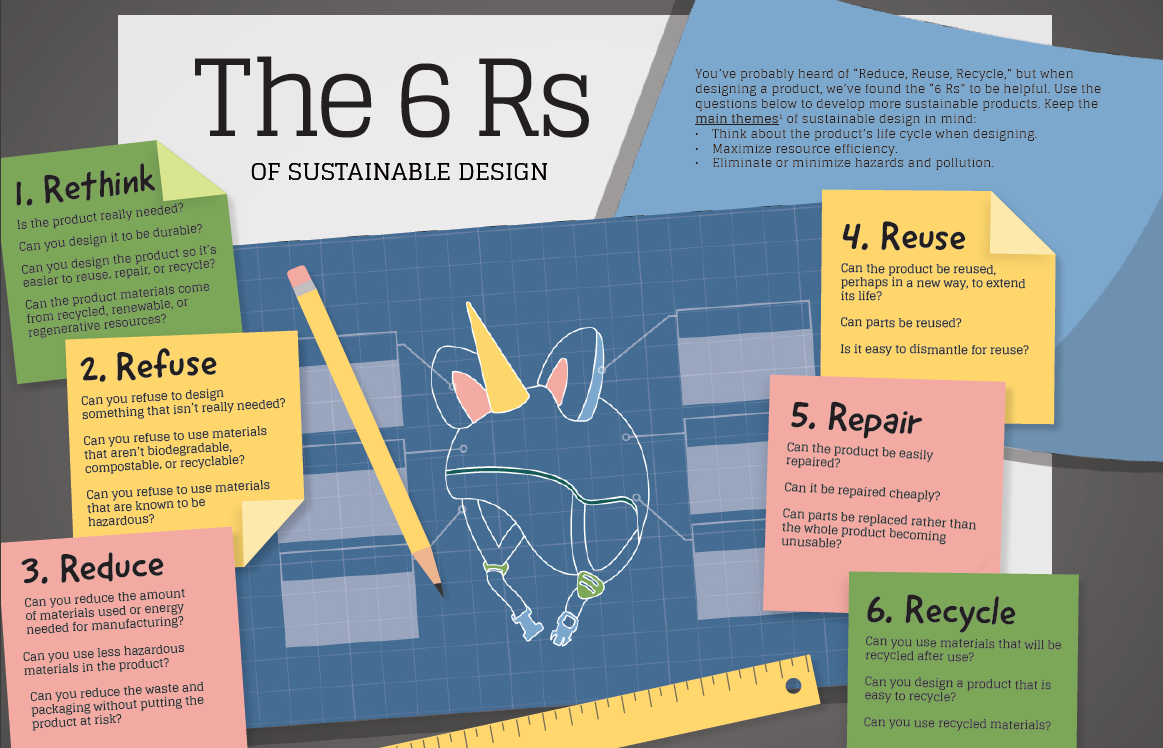Green chemistry for K-12 teaching
Let us help you inspire the next generation of scientists! Find open-access lessons about green chemistry to add to your curriculum for elementary, middle, and high school students.
Integrating green chemistry into your lessons, classroom activities, and lab experiments can help you:
- Create safer, engaging lessons.
- Prepare students for the workforce by helping them think creatively through practical problems, and consider careers related to green chemistry.
- Help you teach cross-disciplinary concepts that align with:
- Reduce chemical hazards in the classroom and stockroom.
- Save money on chemical purchases and waste disposal.
The 6 "Rs" of sustainable design (free poster)
Click the image to download or order free copies
- Rethink.
- Refuse.
- Reduce.
- Reuse.
- Repair.
- Recycle.
Classroom resources by grade
Funding for high school teachers
If you are a high school teacher and need funding to start a green chemistry initiative, consider applying for an American Chemical Society Grant.
Attend a training or workshop
Here are some trainings for teachers or those interested in learning more about green chemistry.
- Washington Teacher's Professional Development posts trainings available for clock hours and professional development that may be related to green chemistry or sustainable design.
- University of Washington Green Chemistry & Chemical Stewardship Online Certificate: An 8-month online program teaches the principles of green chemistry and how to incorporate them into product design, materials, and supply chain decisions.
- UNIDO Green Chemistry Toolkit.
- Green Chemistry and Sustainable Energy Summer School: A week-long residential program for graduate and postdoctoral scholars. Travel, housing, and meals included for participants!
- Online Summer Green Chemistry Courses for High School teachers: Introductory and advanced online summer courses that provide educators with tools to integrate green chemistry principles and practices into their classroom. These courses are structured in an interactive go-at-your-own-pace format.
Need help?
If you need a resource, input on your ideas, or guidance for where to go next, contact our team at safer.chem@ecy.wa.gov.
Related links
Contact information
Safer Chemicals Team
Safer.Chem@ecy.wa.gov


